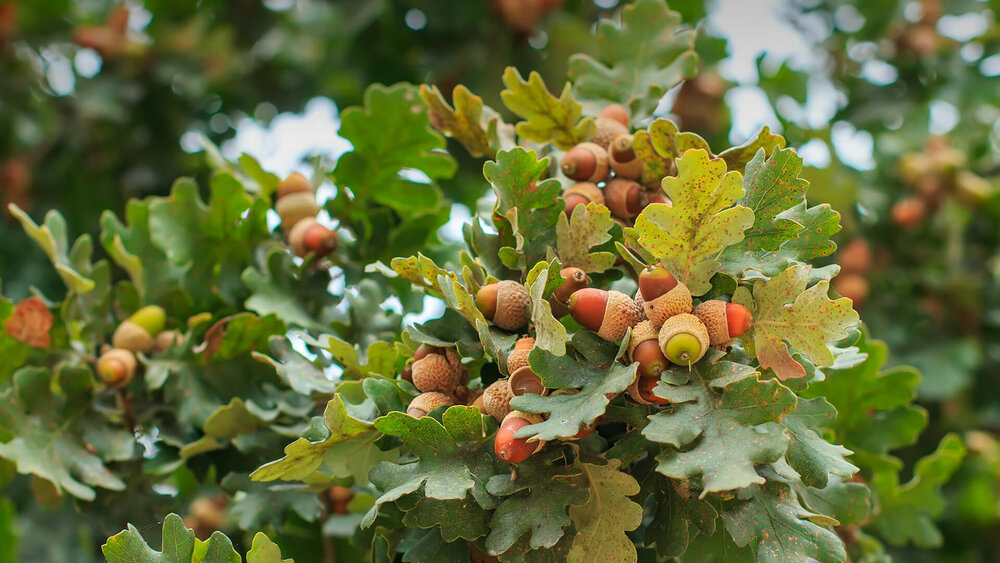Biotechnology holds promise for improving oak forest health in Iran: official

TEHRAN — Biotechnology has the potential to be a part of the solution in protecting oak forest trees against destructive pest and disease outbreaks, Mostafa Qanei, secretary of biotech development center (BioDC) at science and technology vice-presidency, has said.
Zagros forests begin in northwestern West Azarbaijan province, along the Zagros mountain range, and extend to southern Fars province. The forests pass 11 provinces and cover an area of some 6 million hectares which is 40 percent of the country’s forest area.
Different species of oak are the most important and dominant trees in this vast forest (comprising some 70 percent of all trees) and this has led to naming it as ‘Zagros Oak Forests’. Zagros Oak Forests are of Iran’s ancient heritage in western and southwestern areas.
The natural attraction of the oak forests have ornamented provinces of Chaharmahal and Bakhtiari, Kermanshah, Ilam, Khuzestan, Lorestan, Fars and Kohgiluyeh and Boyer-Ahmad, and is facing serious challenges.
Almost half of the oak trees in the forest areas of western Ilam and Kohgiluyeh-Boyer-Ahmad provinces are suffering from charcoal disease which can ultimately destroy the whole forest, Omid Sajjadian, a board member of ‘Zagros green movement’ environmental group, said in April 2018.
The disease is caused by biscogniaxia mediteranea. The leaves of infected trees turn brown and gradually, dark viscous exudation appears on the trunk. And in the winter of the next year fungal growth induces a typical charcoal-black surface on diseased branches and trunks which ultimately leads to the death of the tree. Although it’s a fungal disease, the main culprit for this outbreak seems to be drought and sand and dust storms.
Restoration of oak forests by employing molecular techniques and biotechnology has become a priority for the biotech development center, IRNA news agency quoted Qanei as saying on Sunday.
Creating a gene bank for oak trees in an attempt for management and conservation of forest genetic resources, and finding methods for pest control, are of the plans drawn up to protect the forests, he highlighted.
He went on to say that “we are planning on producing medicines by means of biotechnology techniques using secondary metabolites in oak trees.”
Secondary metabolites have shown to possess various biological effects, which provide the scientific base for the use of herbs in the traditional medicine in many ancient communities. They have been described as antibiotic, antifungal and antiviral and therefore are able to protect plants from pathogens.
Some of the plans are already implemented and some are still being studied, however, implementation of all the plans can help safeguarding the forest, he noted.
Moreover, Qanei said, research teams are working on discovering other factors contributing to the oak forests loss and finding ways to reverse the deforestation.
Meanwhile, local communities and non-governmental groups are also striving to either stop or slow the loss of precious oak forests, he concluded.
Biotechnology in protecting forests
According to the National Academies of Sciences, Engineering, and Medicine, biotechnology has the potential to help mitigate threats to forests by introducing pest-resistant traits, but research is needed to help meet challenges presented by this approach.
The necessary genetic changes to achieve resistance are often not easy to identify and are challenging to implement. Furthermore, the effectiveness of biotechnology at mitigating forest threats needs to be assessed on many fronts. In addition to evaluating how effectively the resistance trait protects a tree species, the modified tree needs to be tested for viability in the diversity of environments in which it will live and for its effects on other species in the environment.
Biotechnology is one of many approaches to addressing forest health, the report cautions, and it should not be pursued to the exclusion of other practices for managing forest health, including prevention of the arrival of invasive species and site management practices.
Leave a Comment